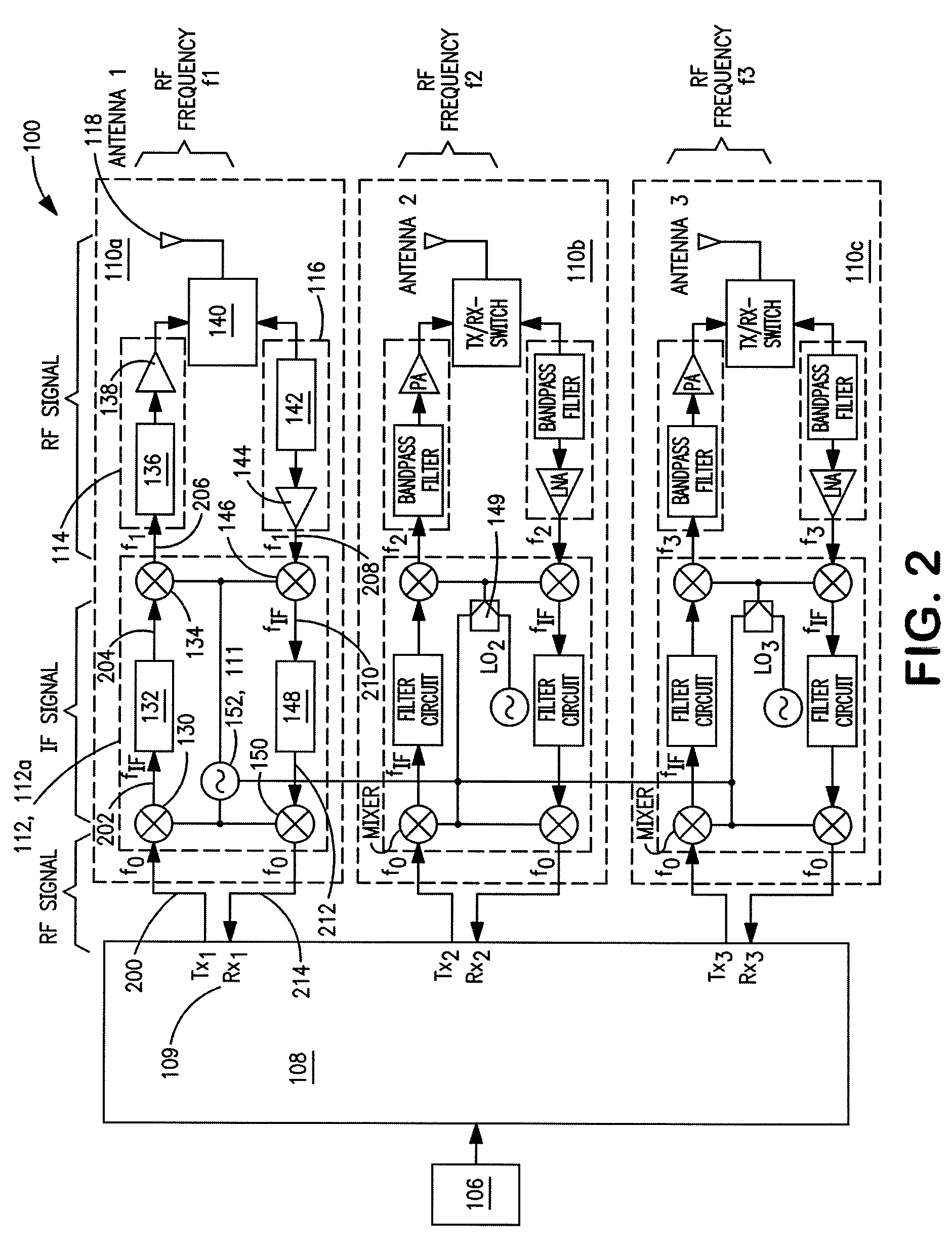System and method for frequency offsetting of information communicated in MIMO based wireless networks
a wireless network and information communication technology, applied in the field of communication systems, can solve the problems of overriding industry requirements of solution size, power and cost, and reduced link budgets, and achieve the effect of reducing interferen
- Summary
- Abstract
- Description
- Claims
- Application Information
AI Technical Summary
Benefits of technology
Problems solved by technology
Method used
Image
Examples
Embodiment Construction
[0062]FIG. 1 shows a schematic view of a portion of a communication network for communicating information wirelessly in accordance with one or more embodiments of the present invention. FIG. 2 is a schematic view of the communication system of FIG. 1 comprising a plurality of radio frequency chains that on a transmission side apply an independent frequency offset to a base frequency.
[0063]A communication network 20 includes one or more communications systems 100, illustrated generally as systems 100a and 100b, which are in wireless communication with each other. However, the present invention is not limited specifically to wireless communications but may include any other method and means for communication now known or yet to be developed.
[0064]Each system 100, e.g., system 100a, 100b, may be a portion of a communication device, automated device, and / or the like and disposed in a receiver, transmitter, transceiver circuit or device and / or the like. For example, system 100, i.e., sys...
PUM
 Login to View More
Login to View More Abstract
Description
Claims
Application Information
 Login to View More
Login to View More - R&D
- Intellectual Property
- Life Sciences
- Materials
- Tech Scout
- Unparalleled Data Quality
- Higher Quality Content
- 60% Fewer Hallucinations
Browse by: Latest US Patents, China's latest patents, Technical Efficacy Thesaurus, Application Domain, Technology Topic, Popular Technical Reports.
© 2025 PatSnap. All rights reserved.Legal|Privacy policy|Modern Slavery Act Transparency Statement|Sitemap|About US| Contact US: help@patsnap.com



